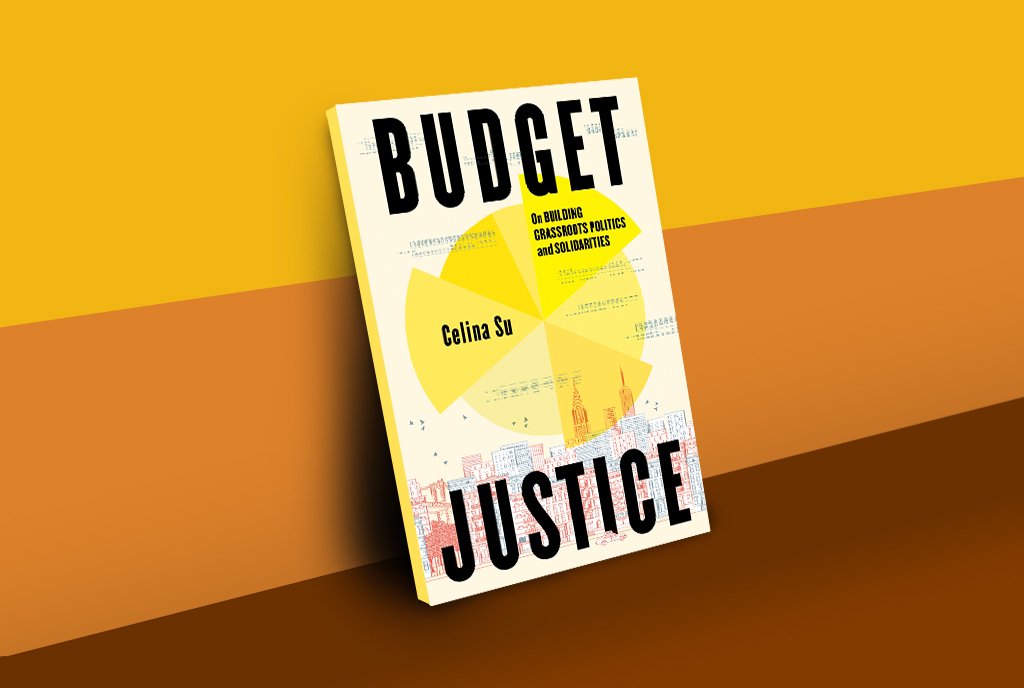
Founded in 1981, Race Forward is a nonprofit racial justice organization with a mission of “helping people take effective action toward racial equity.” Over the past 15 years, Race Forward has convened Facing Race, which is described as the nation’s largest multiracial and intergenerational racial justice conference.
This year—the tenth anniversary of the Ferguson Uprising—the conference will be held in St. Louis, MO (and also streamed virtually) from November 20 to 22. The theme will be “Our Power, Our Solutions,” and MSNBC Political Commentator Joy-Ann Reid will be the keynote speaker.
Leading up to the conference, NPQ spoke with Leslie Grant-Spann, Race Forward’s senior director of conferences and convenings, about how the conference has evolved and how it is seeking to meet the political moment by bringing people together from across the country to strategize and build power.
This interview has been edited for length and clarity.
Rebekah Barber: Can you tell me about your background and how you got involved with Race Forward?
Leslie Grant-Spann: This year is my tenth anniversary on staff. I joined the staff back in 2014 to manage the production of the Facing Race conference. Prior to joining Race Forward, I came from a background of grassroots community organizing and youth organizing within the reproductive justice movement.
“We see ourselves as bridges and connectors in helping to bring folks from different parts of the movement together for…solutions and strategic dialogue.”
I also had done some work facilitating leadership development programming with women of color leaders, specifically Black women who were leading organizations that used community organizing as a strategy.
I’ve been doing social justice work for over 20 years now. When I joined the Race Forward staff, my hope was that I could support them in using their convenings to bring more people into the racial justice movement but also create a space for people to share resources, network and build their relationships with each other, and deepen their practice in racial justice.
Facing Race is what we call our “Big Tent” event. It’s broad in the sense that it brings racial justice practitioners, artists, movement makers, educators from all over the movement who are working at the intersections of race, class, education, the environment, reproductive health, and rights, et cetera.
RB: How have you seen the Facing Race conference evolve since it first started?
“There’s not just this one way we need to pursue racial justice here in the US. There has to be many strategies.”
LGS: Race Forward has a long history of doing convenings and conferences as part of the way it engages with the racial justice movement. We see ourselves as bridges and connectors in helping to bring folks from different parts of the movement together for cross-pollination of ideas and solutions and strategic dialogue.
When the organization first started convening people, the vehicle was a race and policy gathering that we did all over the country. Eventually, around 2007 to 2009, the conference evolved into the Facing Race conference. Before that, it didn’t have a specific name or brand, but we had already begun to convene people, with the framework being race and policy.
The evolution includes not only thinking about policy as a way to move the needle on racial justice here in the US but also looking at how people are contributing to racial justice movement making through art, culture, narrative development, communications, cultural organizing, innovation, and technology.
There’s not just this one way we need to pursue racial justice here in the US. There has to be many strategies—and that’s been at the heart of the evolution of Facing Race.
“Despite the shifting conditions of the political landscape, the fact of the matter is that this movement has power.”
RB: This year’s conference theme is “Our Power, Our Solutions.” Can you talk a little bit about how you all landed on this particular theme and why it’s so important to develop grassroots solutions?
LGS: We spent a lot of time thinking about how we wanted to position a conference in such a significant year with the presidential elections, the midterm election races in both the House and the Senate, and all the different gubernatorial races that took place across the country.
One of the things that we wanted to remind the racial justice movement of was its power. Despite the shifting conditions of the political landscape, the fact of the matter is that this movement has power.
Sign up for our free newsletters
Subscribe to NPQ's newsletters to have our top stories delivered directly to your inbox.
By signing up, you agree to our privacy policy and terms of use, and to receive messages from NPQ and our partners.
Through the various ways people are innovating in this space, through their ideas, their programing, their initiative, their policy advocacy, their community organizing efforts, their cultural organizing efforts—all of that is how we harness power to move the needle on race here in the US, but also sustain communities that are on the frontlines and receiving a lot of backlash and targeting from our political system.
It’s not lost on any of us that we know very clearly what the problems are. Many of us live those problems every day. Racism is alive and well in America. Institutional racism is alive and well.
We are about not getting overwhelmed by what the problems are—because we know what those problems are. We live them and breathe them every day—but what are the solutions?
What are the ways we’re reclaiming and owning and standing in our power to improve the lived experiences of BIPOC people here in the US? And what is our role in generating the solutions for what it will mean for us to govern ourselves for the long haul? What will it take? What kind of innovation is needed for us to build a multiracial democracy that is inclusive of all people and representative of the citizens of this country? That’s at the heart of what we were getting at with our theme for 2024.
RB: In addition to leaning into the need for developing solutions, are there any other ways you’re using the conference to meet this current political moment?
LGS: I believe that Facing Race is the way that we’re meeting the moment. As an organization, bringing together over 4,000 racial justice movement practitioners is us, in this time, providing a space for us to gather together.
That meets a really important need for many of us who are doing this work, who are bound by limitations of resources and time. Facing Race is a dedicated, carved-out time to bring together racial justice practitioners from across the United States, even a small audience of folks who come internationally to harness the power of our movement.
We hope to give people not only a sensory experience while at the conference but also invite them into a number of different calls to action on things they can do. In addition to their day-to-day work, there are time-sensitive and important actions that they can take to support a variety of campaign efforts that they can tap into that will continue to help advance the movement for racial justice.
RB: This year marks 10 years since the Ferguson Uprising. Mike Brown, Sr., is speaking on one of the panels. Can you talk about the intentionality behind holding the conference in Missouri this year?
LGS: We understood that we needed to be in support of the cities of St. Louis and Ferguson and the region as they were approaching 10 years since the Ferguson Uprisings.
The Facing Race gathering ultimately is an amplifier and platform for lifting up racial justice solutions and innovation. In the 10 years since the uprising, there has been a lot of growth of movement-led and Black-led organizations that are innovating with community programs and public policy initiatives that have come out of the region, and a real true vision for what the next 10 years look like for the cities of St. Louis and Ferguson.
What do they want? What kind of future are they creating for themselves? And what does that mean for communities to hold that power? We feel honored to support the work of the homegrown leaders there who were raised and shaped by the Ferguson Uprisings over the last 10 years.
RB: Can you also share about the speakers and panels? How did everything come together?
LGS: Building a local host committee is at the heart of how we engage with any city that’s a host and backdrop to the gathering. We are working with about a dozen local organizations that are race-explicit in their programs, advocacy, and organizing work.
They have come on as our partners to help us design and put St. Louis’s DNA on the experience. They’ve been our guidepost in helping us think about the conversations that will be most beneficial for telling the story of this region and what the last 10 years have meant to the racial justice movement there, and what it means for the future.
Our host committee has been central to helping us think through and understand the appropriate variety of sessions that we should be focusing on, how we can amplify and center storytelling, and how we connect with people as well as how we can stimulate people’s other senses through immersion in art and culture at the conference as well.
We have three mainstage programs, and that arc is really focused on the importance of organizing, the importance of harnessing the power of this movement, and the importance of joy at this time.
How do we not get so bogged down in what can feel like quite a dismal time coming out of this election season? We want to remember that our organizing is critical to our ability to build power, and we must remember to center our joy and experience as people. People are dynamic and have a variety of different needs.
That’s been at the heart of our design process this year—wanting to ensure that we are welcoming people into a robust experience that really fills their cup and reminds them of their power and also can cultivate a little bit of joy so that they can continue to do this work that’s very much needed right now.











